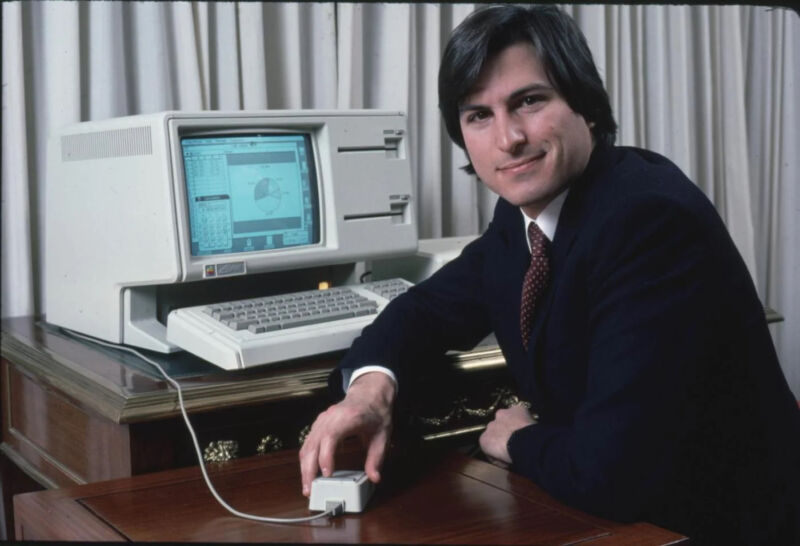
Forty years ago today, a new type of personal computer was announced that would change the world forever. Two years later, it was almost completely forgotten.
The Apple Lisa started in 1978 as a new project for Steve Wozniak. The idea was to make an advanced computer using a bit-slice processor, an early attempt at scalable computing. Woz got distracted by other things, and the project didn’t begin in earnest until early 1979. That’s when Apple management brought in a project leader and started hiring people to work on it.
Lisa was named after Steve Jobs’ daughter, even though Jobs denied the connection and his parentage. But the more interesting thing about the Lisa computer was how it evolved into something unique: It was the first personal computer with a graphical user interface (GUI).
The vision takes shape
GUIs were invented at Xerox’s Palo Alto Research Center (PARC) in the early 1970s. The Alto workstation, which was never sold to the public, had a bitmapped screen that mimicked the size and orientation of a piece of paper. PARC researchers wrote software that displayed windows and icons, and they used a mouse to move a pointer on that screen.
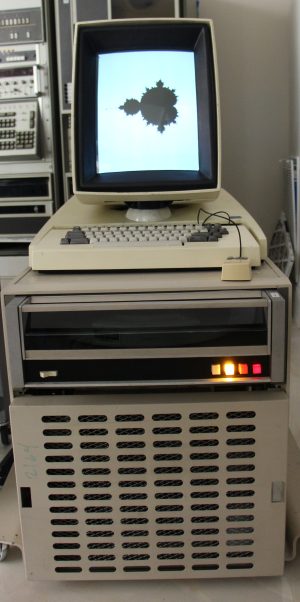
Jef Raskin, an early Apple employee who wrote the manual for the Apple ][, had visited PARC in 1973. He believed that GUIs were the future. Raskin managed to persuade the Lisa project leader to change the computer into a GUI machine. However, he couldn’t convince Jobs, who thought Raskin and Xerox were incompetent.
Raskin altered his approach and got graphics programmer Bill Atkinson to propose an official tour of PARC in November 1979. Because Jobs thought Atkinson was great, he agreed to come along. Jobs’ visit to PARC became the stuff of legend, a tale of a brilliant visionary seeing the future of computing for the first time. But in reality, Atkinson was already working on LisaGraf—the low-level code that would power the Lisa’s GUI—months before Jobs saw the PARC demo.
The Lisa’s hardware changed as well. The team abandoned the bit-slice processor and adopted Motorola’s new 68000 CPU. The 68000 was a 16/32-bit chip and used a 24-bit address bus, giving it a maximum of 16 megabytes of memory. This was fine, as memory prices were still sky-high in 1980, and most computers of the day had a maximum of 64 kilobytes of RAM.
In January 1981, senior leadership at Apple got tired of Jobs’ constant interference and micromanagement of the Lisa project and officially removed him from the team. Jobs seethed, then took over a smaller skunkworks project being run by Raskin. This would become important later.
By early 1982, the Lisa hardware was mostly finalized. However, the software was still in flux. A team of designers—including Larry Tesler, who had left PARC to join Apple—had been busy doing tons of research, prototyping, and testing. The main question they had was: How should the Lisa’s GUI actually work?
-
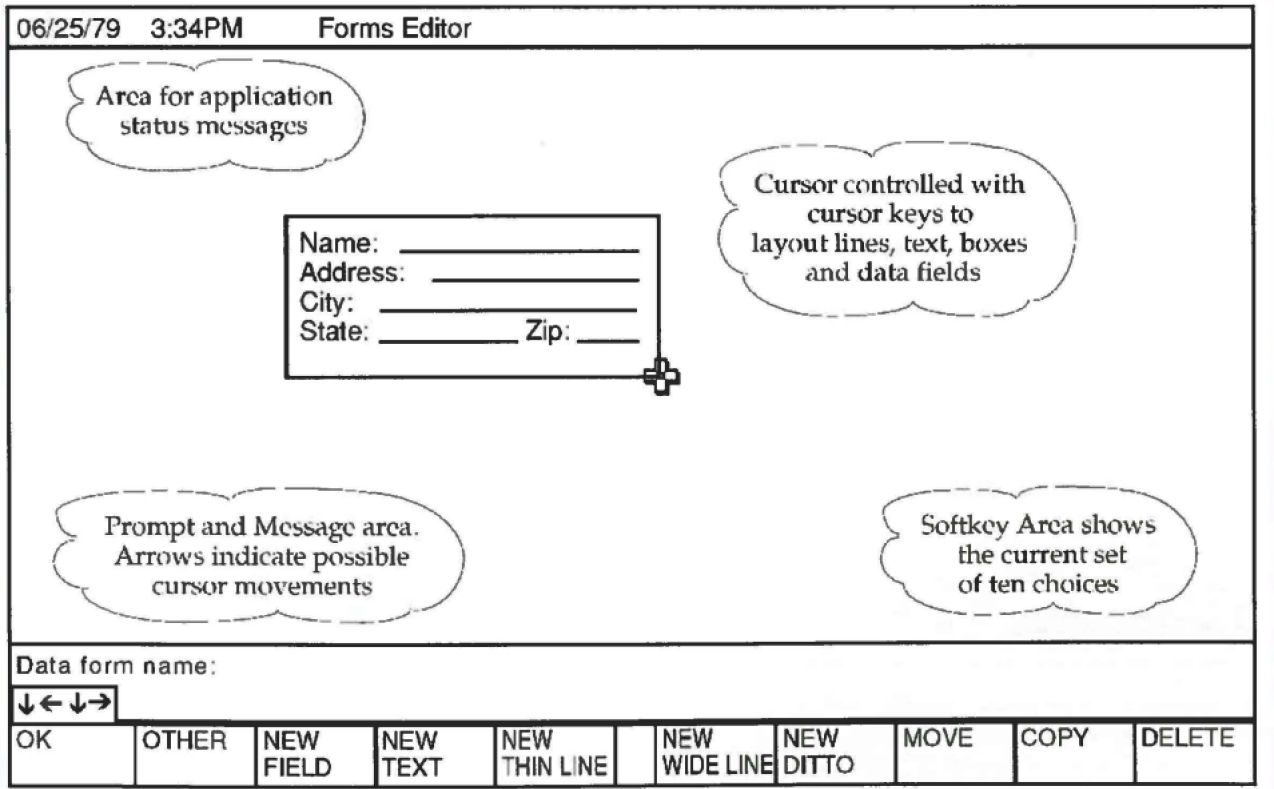 June 1979: A mockup of an early Lisa interface, running on an Apple ][.Interactions magazine
June 1979: A mockup of an early Lisa interface, running on an Apple ][.Interactions magazine -
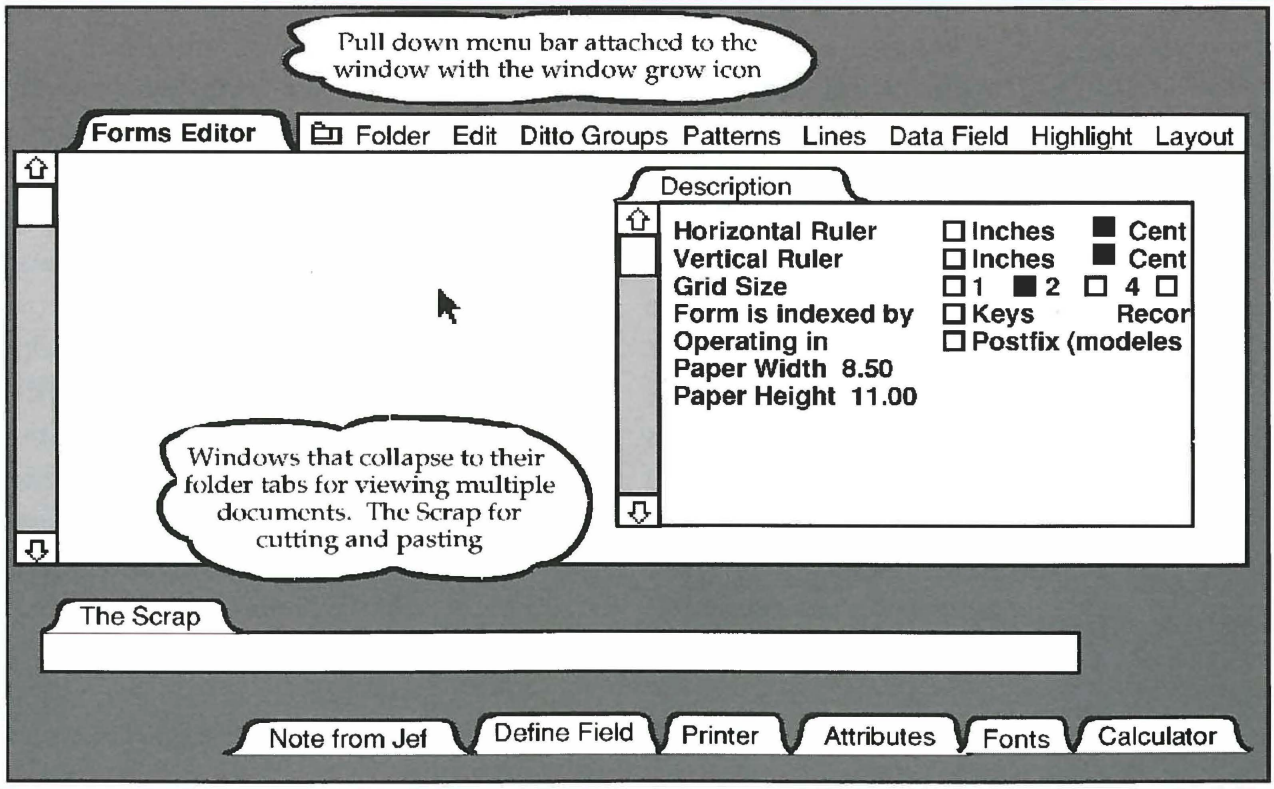 August 1980: A mockup of menus and dialog boxes, running on a Lisa prototype.Interactions magazine
August 1980: A mockup of menus and dialog boxes, running on a Lisa prototype.Interactions magazine -
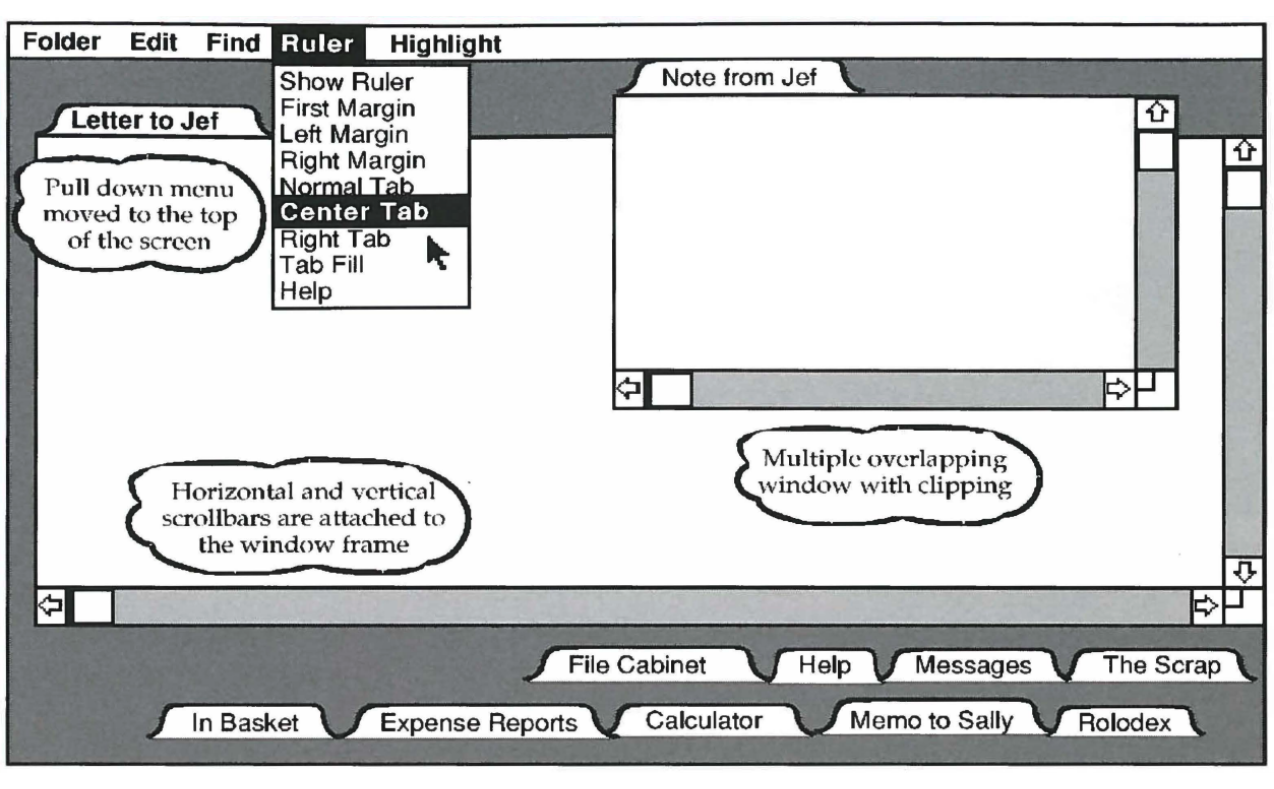 October 1980: A mockup of the new single menu bar. Note the “Note from Jef.”Interactions magazine
October 1980: A mockup of the new single menu bar. Note the “Note from Jef.”Interactions magazine -
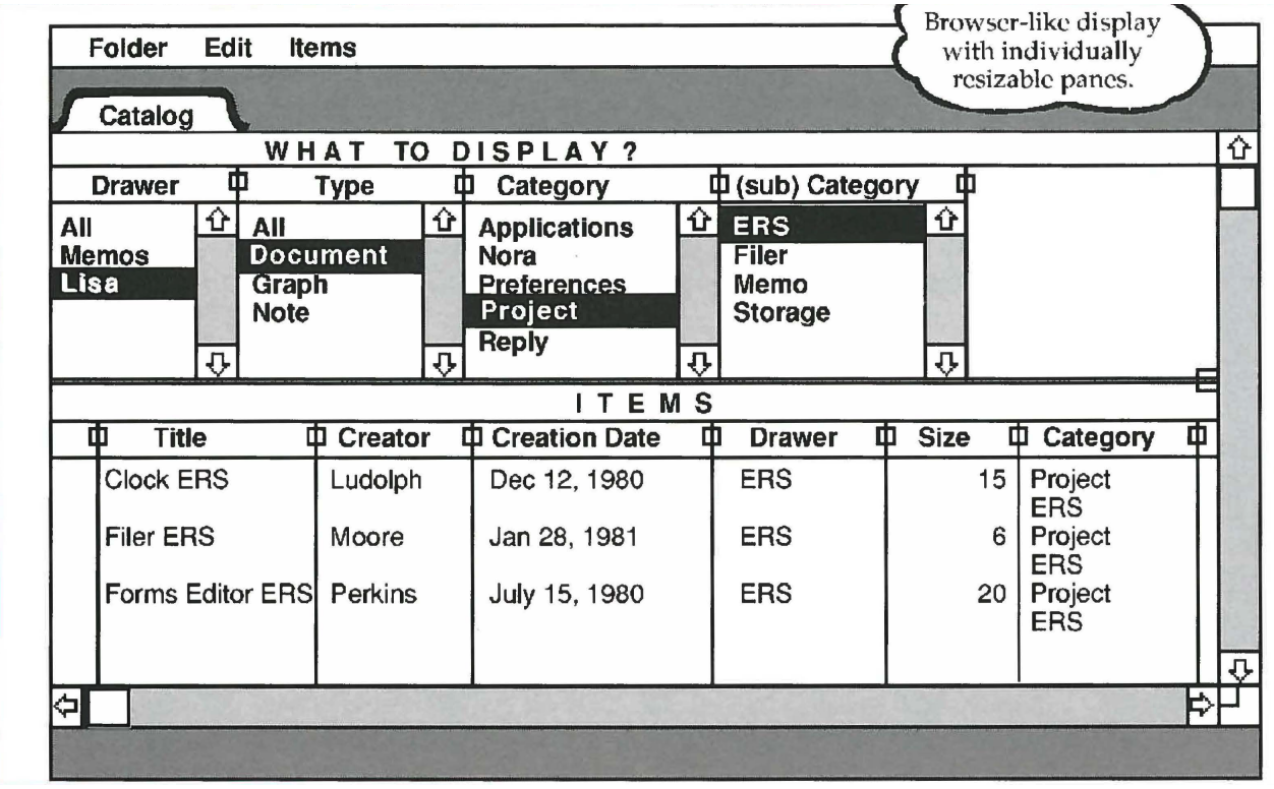 December 1980: An abandoned multi-column file browser. This design would return in NeXTstep and OS X.Interactions magazine
December 1980: An abandoned multi-column file browser. This design would return in NeXTstep and OS X.Interactions magazine -
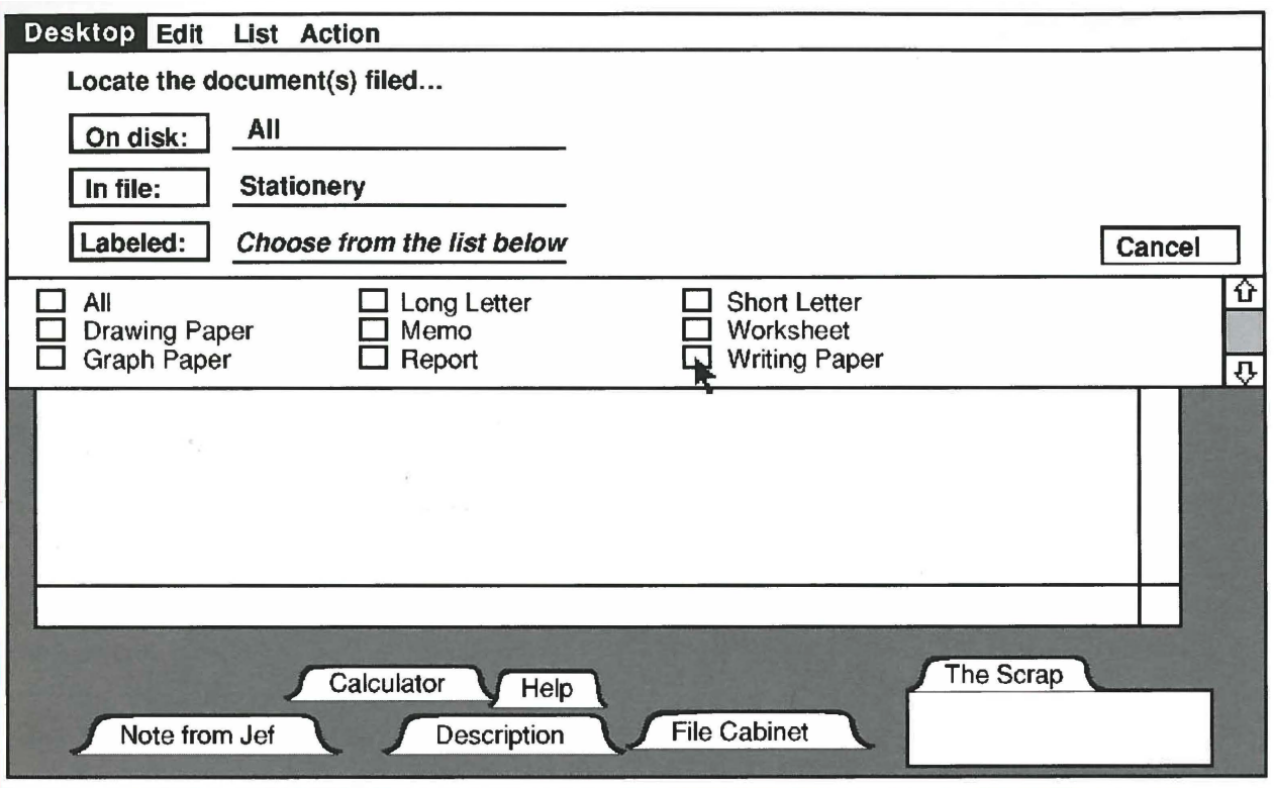 July 1981: The “Twenty Questions” file locator. It worked, but nobody found it “fun,” so the team returned to the icon-based approach.Interactions magazine
July 1981: The “Twenty Questions” file locator. It worked, but nobody found it “fun,” so the team returned to the icon-based approach.Interactions magazine -
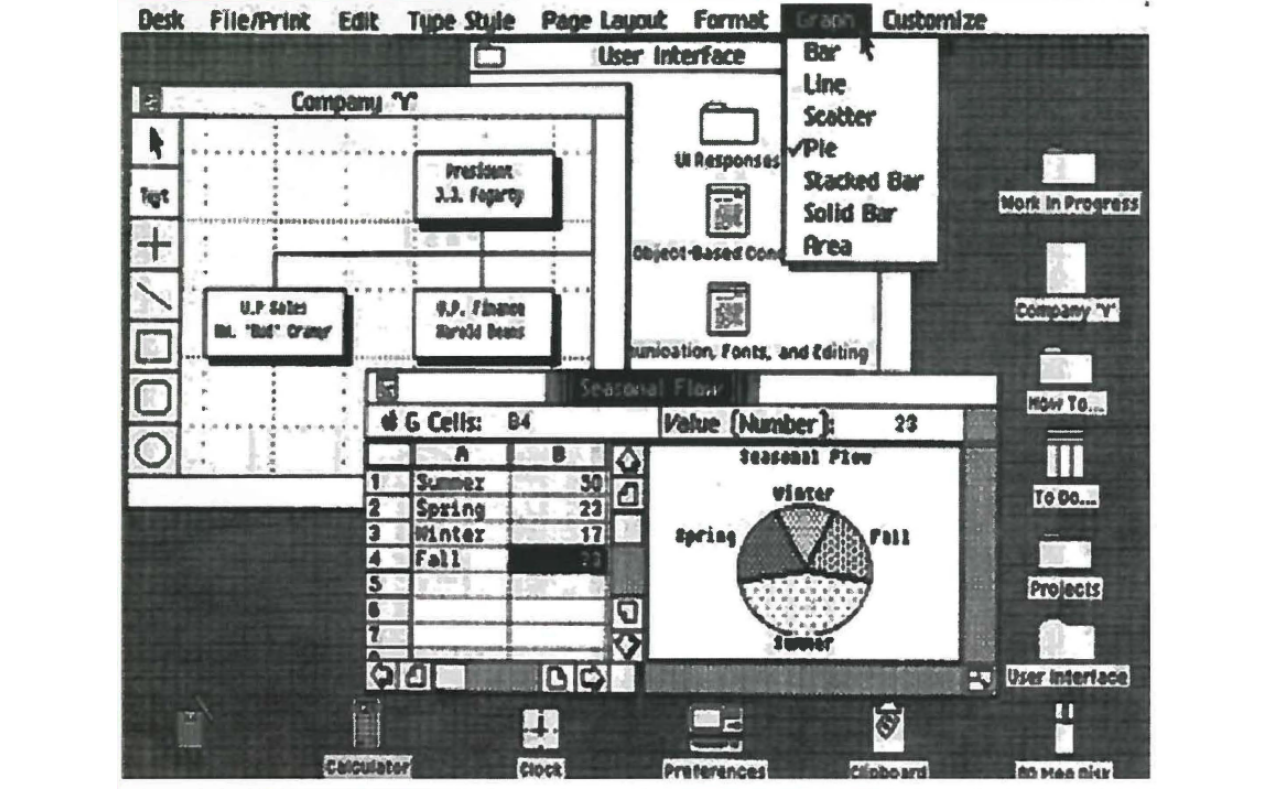 August 1982: The Lisa’s GUI is finally finalized.Interactions magazine
August 1982: The Lisa’s GUI is finally finalized.Interactions magazine
In an article in Interactions magazine, designers Roderick Perkins, Dan Smith, and Frank Ludolph described how the Lisa’s interface changed from early prototypes to a familiar desktop with icons, then away from that model, then finally back to an icon-based, document-centric approach. The goal was to make the Lisa powerful and fun to use.
At long last, the Lisa was ready to be unveiled to the public. On January 19, 1983, Apple announced the computer, which it accurately described as “revolutionary.”


3175x175(CURRENT).thumb.jpg.b05acc060982b36f5891ba728e6d953c.jpg)
Recommended Comments
There are no comments to display.
Join the conversation
You can post now and register later. If you have an account, sign in now to post with your account.
Note: Your post will require moderator approval before it will be visible.